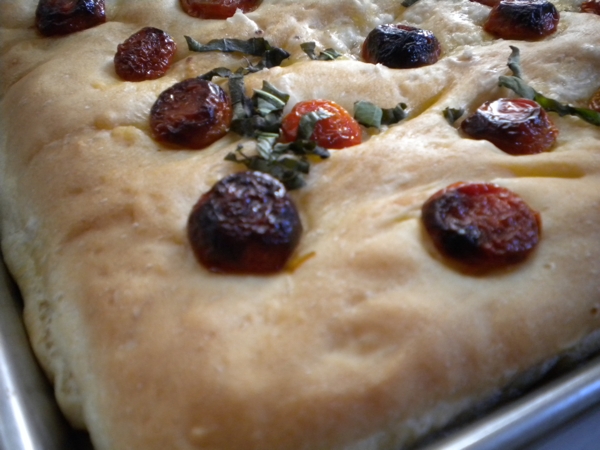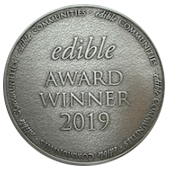As much as I enjoy baking, I’ve never become super committed to learning to bake bread. I have two wonderful bread books, both highly informative: Rose Levy Beranbaum’s The Bread Bible and Bernard Clayton’s New Complete Book of Breads. But here in Cincinnati we’re a little spoiled for good, locally made artisanal bread — from Blue Oven, Anderson Brick Oven and Shadeau.
Still, it’s easy and fun to make your own bread at home. And focaccia is the ideal entry point into bread baking, because the dough is pretty forgiving and it doesn’t require shaping.
When Rob and I traveled to Italy this summer, we ate focaccia pretty much every day. This simple, honest bread is a staple of the Italian table. My brother, Bill, who spent several years teaching at a culinary school in Tuscany, has a terrific recipe for homemade focaccia. (This guy knows from bread: He owns Baker & Nosh in Chicago’s Uptown/Andersonville neighborhood.)
Focaccia is pretty easy and fool-proof, as far as I’m concerned, and yet it still delivers that warm, yeasty, great-smelling, I-made-this-myself satisfaction that you get from making bread. The recipe is a bit imprecise, but don’t worry. You can’t mess this up. The dough should be slightly tacky after kneading; if it’s too wet, add flour a pinch at a time, and if it’s too dry when you’re mixing it, add water a drop at a time.
Top your homemade focaccia any way you’d like: with a big glug of good olive oil, some coarse salt and fresh cracked pepper, chopped fresh rosemary or thyme, roasted onion or cherry tomatoes (as I did in the photo), Asiago or Gorgonzola cheese.
In a glass measuring cup, dissolve 1 package of active dry yeast (regular or rapid-rise) in 1 cup of very warm water; add a pinch of flour and a pinch of sugar to "feed" the yeast. After a few minutes, the mixture should be foamy on top.
In the bowl of a stand mixer (using the dough hook), dump 4 cups of all-purpose flour. Add 2 Tbsp. of olive oil. Pour in the yeast and water and turn the mixer to low speed. Blend the dough until the water is mostly incorporated, then add 1 tsp. salt and mix to combine. Pinch off a bit of dough and taste it: It should be lightly salty; add more salt if needed. Continue mixing until the dough comes together in a ball. Feel it: If it sticks to your hand but isn't too gloopy, it's right. If it's too dry, add water drop by drop. If it's gloopy, add flour a pinch at a time. Humidity can affect the dough's texture, so you may need to add a couple of tablespoons of either flour or water to get the stickiness you want. And don't worry: if you overshoot in one direction or the other, just compensate with flour or water.
Rub olive oil over the insides of a large bowl; turn the dough into the bowl and turn it over to coat with oil. Cover the bowl with plastic wrap and let it sit in a warm spot until the dough doubles in bulk, anywhere from 30 to 60 minutes. (I leave the bowl in my oven with the light on.)
Rub olive oil on a rimmed baking sheet (a half-sheet pan is nice). Turn the dough out onto the baking sheet and press it out to fill the pan as best you can. Cover with plastic wrap and let the dough rise again for about 45 minutes.
Preheat the oven to 450. When the dough has risen, use your fingers to lightly poke dimples into the surface. Drizzle with olive oil and sprinkle with coarse salt. Add fresh cracked pepper if you'd like, or Italian herbs, or roasted garlic, or fresh rosemary leaves, or grated Parmesan cheese or, as I did here, roasted cherry tomatoes and slivered basil. Bake until golden and crusty, about 25 minutes.






